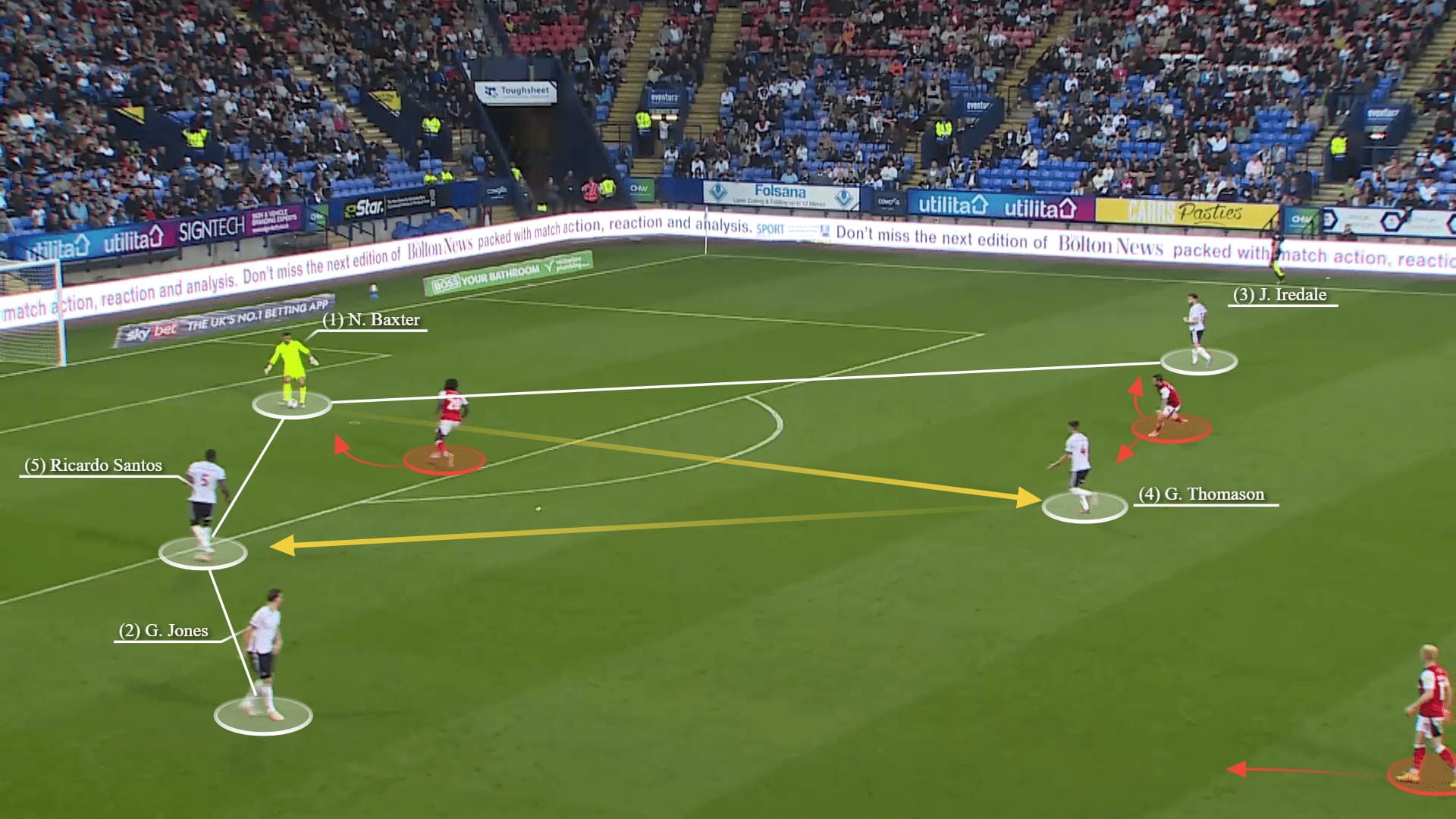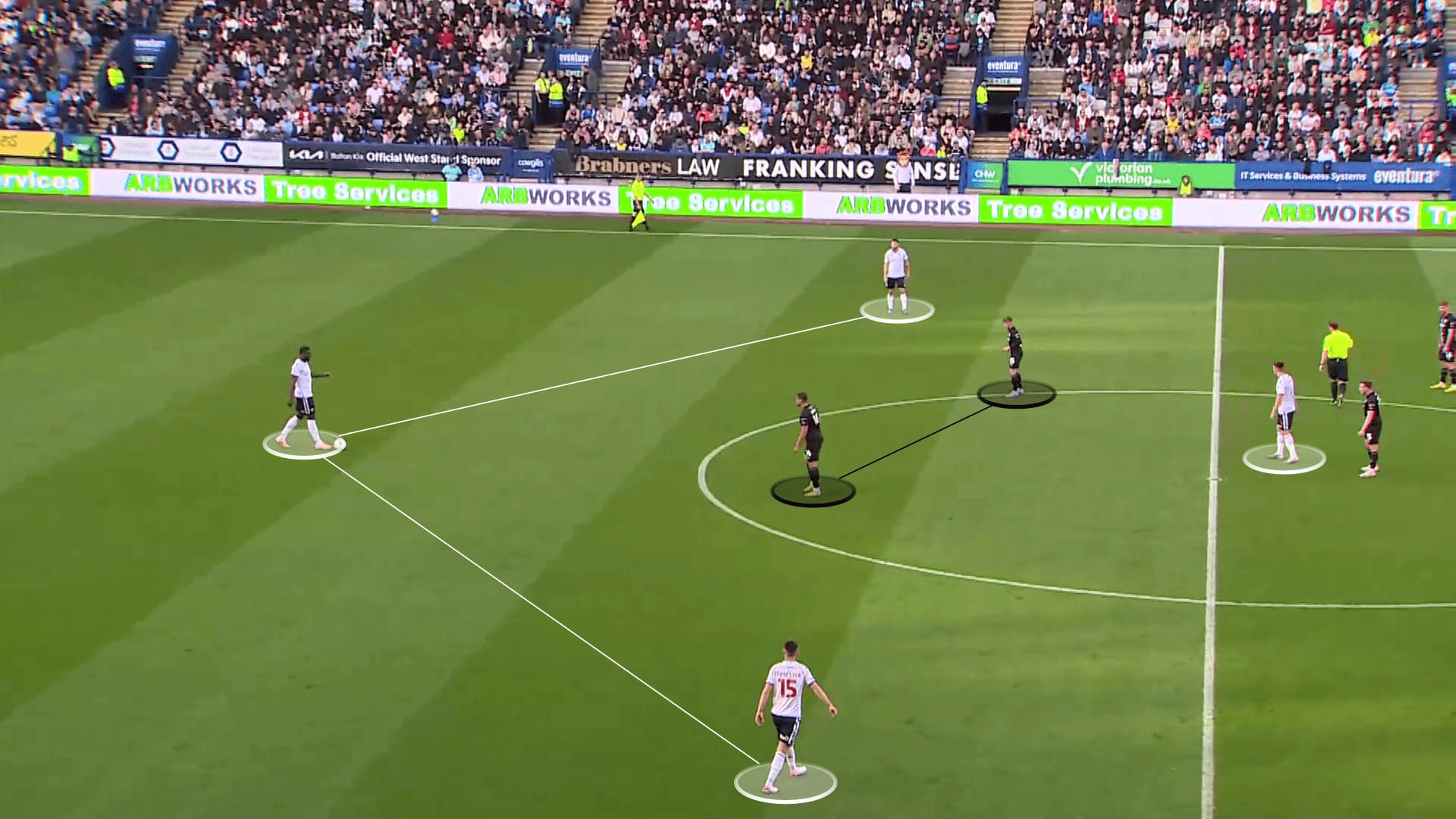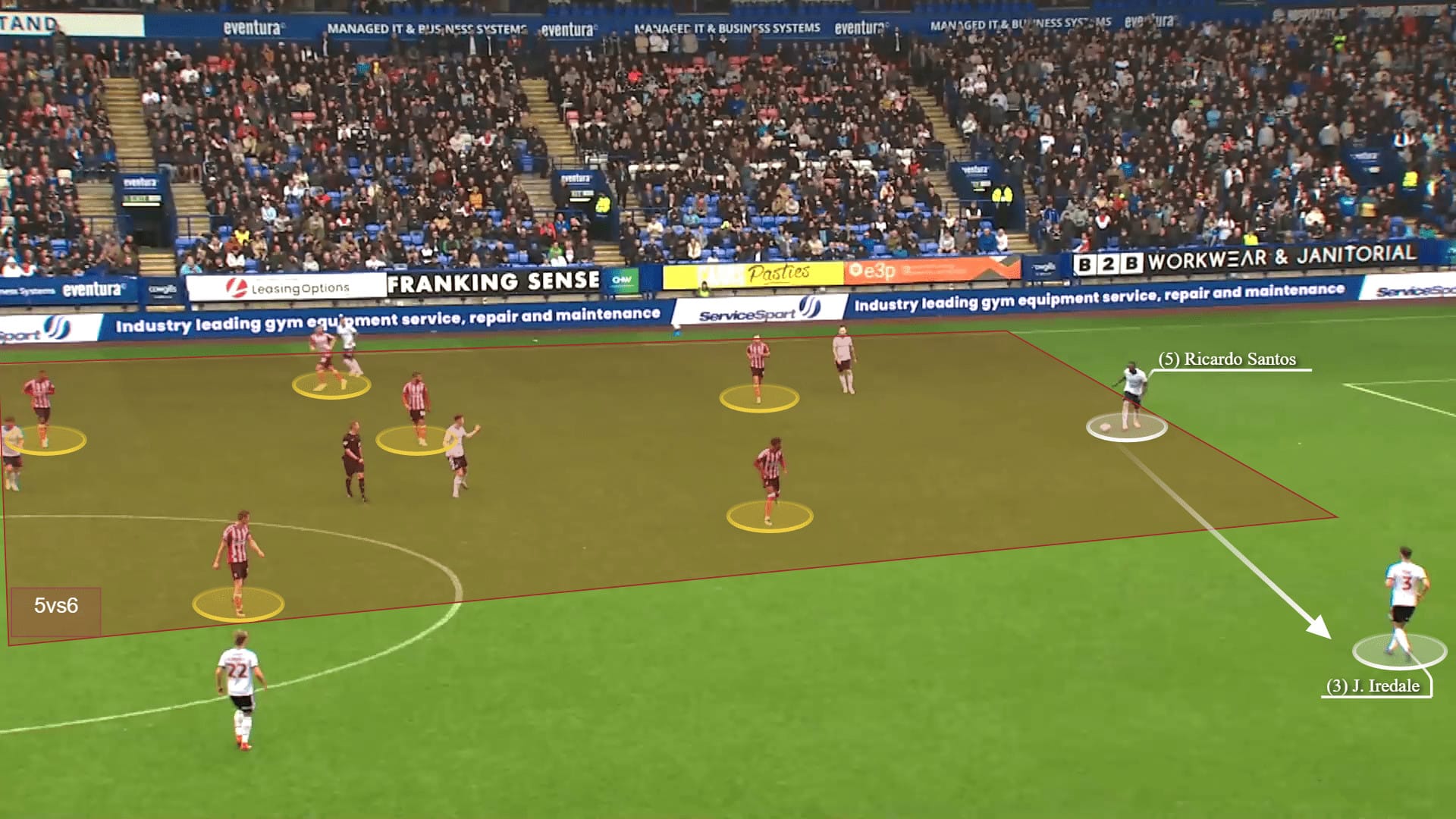Following an impressive start in EFL League One, Bolton Wanderers secured victories in their first four matches. However, their momentum faltered as they faced a setback in their most recent fixture against Wigan Athletic.
Bolton’s recent 4-0 loss to northwest neighbours Wigan over the past weekend proved to be a significant blow, causing evident distress within the team, as expressed by Ian Evatt “hurting”.
Ian Evatt acknowledged the challenges the team faced during this period. He mentioned, “It has been a long week, but the players are all ready to go,” The players felt the sting of the recent loss and dedicated the week to introspection and re-establishing their core identity.
The current season highlighted the exceptional performance of striker Victor Adeboyejo. With a remarkable goalscoring prowess, he netted four goals in the opening matches, showcasing his proficiency within the team’s attacking tactics and offensive tactical framework. Furthermore, Bolton were dominant even in defeat versus Wigan, highlighting the effectiveness of their attacking principles.
In this comprehensive tactical analysis resembling a scout report, we delve into the offensive aspects of Bolton Wanderers’ gameplay. We aim to discern the unique attributes that set them apart from the pack in League One.
Positional attack
Bolton Wanderers have undergone significant refinements to their attacking style under the guidance of their English coach this season, leading to an increased sense of dominance and precision, something like the elite team inside the country, Arsenal, in the Premier League.
Embracing a modern approach, the 41-year-old coach prefers to employ back-three formations that incorporate swift and distinctive attacking strategies. A core emphasis lies in building from the back, utilising short and progressive passes, and integrating contemporary positional rotations within the final third of the pitch.
Their short horizontal passes for possession can be seen in the graphic below, as they have an average of 64.48% possession, while their opponents in League One have 35.52%. Their overall rate for any given match is 581.25 passes (86.4% accuracy) versus 301 (79.7% accuracy) for the opponents, as per Wyscout.

From the back, Bolton Wanderers build with a 4-1 base (The central centre-back aligns with the goalkeeper, while the wide centre-backs adopt positions akin to full-backs. Positioned above them is the defensive midfielder). The builders, with the former Chelsea goalkeeper Nathan Baxter, always focus on keeping the numerical superiority and are keen on short passes through the press, aiming to penetrate through finding the spare man.
The role of the pivot player is pivotal in both receiving the ball and orchestrating third-man combinations when direct routes or moving to open the vertical passages are obstructed. In the below graphic from their 3-1 vs Fleetwood Town, the centre-back Ricardo Santos is reached by No. 6, allowing him the space to carry the ball forward.

Occasionally, the goalkeeper opts for longer or vertical passes. The presence of six higher-positioned players between the lines grants the team numerical and positional superiority on the field. These players are well-dispersed across the width of the pitch, ready to move permanently diagonally and vertically to attack the space behind the opposition’s lines or down to add +1 passing lanes.
During more advanced phases, Bolton adopt a 3-1-6 positional configuration, characterised by a progressive ad positional rotations mindset. This arrangement involves positioning most players beyond the opposition’s midfield, securing a positional advantage—the two wing-backs extend the width, two attacking midfielders occupy the half spaces, and two strikers at the forefront.
The players (3-1 base) in the 1st line usually maintain the numerical advantage, as demonstrated in the graphic against Barrow (3 vs. 2). They can move around, keep the ball and switch the ball from side to side, waiting for an appropriate moment to break through. Fluidity is achieved through the swift dropping off of players positioned between the lines, enabling vertical passes to the ball holder.

Both advanced No. 8s into the half spaces have the freedom to drop off vertically to make it 3-2-5 when needed or diagonally to the side to receive while the wing-backs are in the last line, fixing the opposition’s full-backs.

Or the exact opposite: luring the opposition’s full-backs deeper by the wing-backs and then quickly filling the space with a diagonal movement by the No. 8s—positional rotation.
Here below against Lincoln City (3-0) during the third goal. Initiating the play, Bolton deliberately enticed the opponent to apply pressure on the right side as the central defender Santos executed the La Pausa technique.

Exploiting this, Bolton swiftly switched the play to the left side.

Subsequently, the wing-back (Williams) pulled the opposing full-back away to the deeper and created separation from his marker well. The ball was then played to the defensive midfielder, who, positioned advantageously, directed a pass behind the opposition’s defensive line.
Taking advantage of this play, an advanced No. 8 adeptly received the pass, benefitting from the team’s numerical advantage in the forward line due to the presence of two attackers positioned in depth.

Upon receiving the ball, Dempsey, the advanced No. 8, promptly delivered a driven cross. Remarkably, this well-executed cross led to an own goal as the opposing defender inadvertently directed the ball into his own net.

The wide centre-backs play a pivotal role by exerting significant influence through their progressive passing/runs to the final third.


Final Third
The team consistently prioritises speed in the final third, employing swift one-two or third-man combinations, overloading a specific field side, and delivering crosses into the penalty area. This strategy is bolstered by the six players in the last line, creating ample options.
The wide centre-backs play a crucial role in this approach, frequently making calculated runs, either overlapping or underlapping, to enhance the offensive dynamics by having the density to lure as many opponents as possible and then switch the play or deliver direct crosses.
Furthermore, the strikers (Victor Adeboyejo and Dion Charles) consistently make countermovements —one striker pushing higher up while the other drops deeper— to be involved in the combinations electively. That interplay confounds the defenders, creating confusion and strategically opening up gaps and spaces within the defensive line.
In their goal against Fleetwood Town (5-3-2), Bolton had their six players positioned behind Fleetwood’s midfield. In this scenario, Jones advanced and delivered a vertical pass towards striker Charles, who was dropping off to receive the ball. Concurrently, Adeboyejo positioned himself slightly higher, ready to exploit the defensive line’s vulnerabilities and gain dynamic superiority over his marker.
Charles swiftly released Maghoma with a single touch, who moved vertically into the half-space territory.

Maghoma, displaying precision and awareness, executed a well-timed cutback pass to Adeboyejo. The latter showcased exceptional skill in navigating the situation, ultimately netting a brilliant goal.

The team’s approach extends beyond simply penetrating defensive blocks with quick combinations. Periodically, they exploit space above the defensive lines by executing long balls towards players making vertical or diagonal runs behind the opposition’s defence.
In the lower graphic, a direct long ball was played to a launching player. Despite isolating himself from the goalkeeper, the striker ultimately missed it.

In another scenario depicted below, a long diagonal ball was delivered to a wing-back who moved diagonally adeptly behind the defensive line.

Demonstrating exceptional skill, the wing-back executed a precise cutback pass to Adeboyejo, who brilliantly scored with a single touch.


The statistics for Adeboyejo reflect his outstanding performance at the outset of the season. His significant impact is evident as the focal point of the team’s attack, underlining his role as a primary goalscoring contributor. With a notable tally of four goals thus far, his prowess in finding the back of the net is unquestionably a defining aspect of his playing style.

Unexpected defeat
Following their impressive start, the team experienced an unexpected setback with a substantial 4-0 defeat against Wigan. However, contrary to the scoreline, those who witnessed the match would have noticed a different narrative. Bolton exhibited solid performance throughout the game, creating numerous opportunities yet facing difficulty converting them. Conversely, Wigan capitalised on their chances effectively.
This can be illustrated using the xG (expected goals) statistic, which concluded with 3.89 xG for Bolton compared to 1.59 for Wigan. This metric provides insight into the match’s progression. Additionally, in terms of possession and control, Bolton maintained approximately 63% possession.

While this loss was significant, setbacks are a common aspect of any team’s journey. It can serve as a wake-up call. The crucial factor lies in the team’s ability to remain committed to their style and strategic approaches in pursuing their goals. By doing so, the team can continue its evolution. Even if they temporarily deviate from their path, they possess the resilience to return to their intended trajectory swiftly.
Summary
This analysis illustrated how Bolton Wanderers started strong in EFL League One but faced a setback, losing 4-0 to Wigan Athletic. Their performance is solid, and their possession-based, modern attacking tactics were highlighted. Striker Victor Adeboyejo’s prowess and the team’s strategic formations stood out.
Indeed, time will reveal whether the team can sustain their progress and secure a promotion to the EFL Championship in the upcoming season. Their performance and dedication will ultimately determine their path and potential for advancement.





Comments